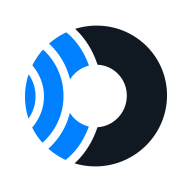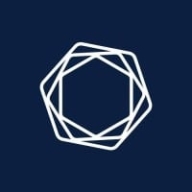


Orca Security and Tenable Cloud Security compete in the cloud security solutions category. Orca has an advantage in pricing and customer support, while Tenable stands out with its robust features.
Features: Orca Security utilizes an agentless architecture for comprehensive cloud visibility, seamless integration with cloud providers, and efficient threat detection. Tenable Cloud Security offers detailed reporting, extensive vulnerability scanning, and strong compliance management utilities.
Room for Improvement: Orca Security needs enhancements in alert management, more customization, and better integration of third-party tools. Tenable Cloud Security could improve its user dashboards, streamline data interpretation processes, and offer enhanced remediation guidance.
Ease of Deployment and Customer Service: Orca Security is praised for its simple deployment and responsive, efficient customer service. Tenable Cloud Security, although having a slightly more complex deployment, is supported with helpful and thorough documentation and customer support.
Pricing and ROI: Orca Security is acknowledged for its competitive pricing and strong ROI, aligning well with user expectations. Tenable Cloud Security, despite its higher cost, offers high security payback potential due to its advanced features.



SentinelOne Singularity Cloud Security protects cloud workloads, offering advanced threat detection and automated response. It integrates seamlessly with cloud environments and secures containerized applications and virtual machines against vulnerabilities.
SentinelOne Singularity Cloud Security is renowned for its efficiency in mitigating threats in real-time. The platform integrates effortlessly with existing cloud environments, ensuring robust cloud security management with minimal manual intervention. Securing containerized applications and virtual machines, it excels in threat intelligence and endpoint protection. However, improvements are needed in performance during high workload periods, and more integrations with third-party tools and better documentation would be beneficial. Users often find the installation process complex, support response times slow, and the dashboard's navigation unintuitive.
What are the key features of SentinelOne Singularity Cloud Security?In specific industries, SentinelOne Singularity Cloud Security is implemented to safeguard critical data and infrastructure. Organizations in finance, healthcare, and technology depend on its real-time threat detection and automated response to protect sensitive information. Its ability to secure containerized applications and virtual machines is particularly valuable in dynamic environments where rapid scaling is necessary.
At Orca Security, we’re on a mission to make it fast, easy, and cost effective for organizations to address critical cloud security issues so they can operate in the cloud with confidence.
Key Platform Features:
Agentless: Complete, centralized coverage of the entire cloud estate, without the need for installing and configuring agents or layering together multiple siloed tools. Full visibility of cloud misconfigurations, vulnerabilities, workload protection, malware scanning, image scanning, file integrity monitoring and more.
Asset Inventory: Get a complete inventory of all your public cloud assets, including detailed information on installed OSes, software, and applications, as well as data and network assets such as storage buckets, Virtual Private Clouds (VPCs), and Security Groups.
Attack Path Analysis: Visualize attack vectors to critical assets or crown jewels. See which assets are susceptible to lateral movement, assume roles, privilege escalation, and more.
Risk Prioritization: Prioritize the 1% of risks that matter the most, based on impact scores. Secure the vulnerabilities and misconfigured targets (critical assets) and eliminate the potential risks residing on the attack paths to those targets.
Cloud Threat Detection: Monitor for malicious activity within your entire cloud estate. Be aware of detected threats, user behavior anomalies and more.
Breach Forensics: Log every change and all activity into a central repository for investigation procedures to confirm or deny entry and compromises within the cloud estate.
Cloud To Dev (Shift Left): Orca’s built-in shift left capabilities enables DevOps to focus more security attention earlier in the CI/CD pipelines. Security teams are able to trace a production risk (misconfiguration or vulnerability) directly to the original source code repository from which it came, even down to the exact line of code that is at the root of the identified risk.
Compliance: Choose from over 60 preconfigured compliance frameworks, cloud security best practices, CIS Benchmarks, or design and build your own compliance framework for fast and continuous reporting.
Security Score: The Orca Security Score is found on Orca’s Risk Dashboard and is updated daily. The overall score is calculated based on performance in the following five categories - Suspicious Activity, IAM, Data at Risk, Vulnerable Assets, and Responsiveness. Since the scores are percentage based and not raw numbers, you can objectively make comparisons to other organizations within your industry or business units of different sizes. In addition to reporting to senior management, the Orca Security Score can help with internal self-monitoring, as a way of measuring risk mitigation efforts, to know where to focus efforts, and track progress.
Orca Security Benefits
Consolidate technologies to reduce costs and complexity:
“The more I can get out of this one solution, the better. I see Orca as the tool where we get all cloud-related security data.” - Joshua Scott, Head of Security and IT | Postman
Avoid costly breaches:
"I look at proactive asset discovery, configuration management, and vulnerability management as being able to find a vulnerability before the bad guys do and being able to deal with it before something exploits it. This is what Orca does for us." - Doug Graham, CSO & CPO | Lionbridge
Increase team productivity and efficiency by focusing on high-value activities and solving the 1% of risks that matter most:
"Orca is unique in that it locates vulnerabilities with precision and delivers tangible, actionable results – without having to sift through all the noise." - Aaron Brown, Senior Cloud Security Engineer | Sisense
Quick Time-to-Value with Immediate ROI:
"Orca told us we could have some visibility within 5 or 10 minutes, and I thought, ‘There’s no way.’ Well, I was wrong. They really did it." - Thomas Hill, CISO | Live Oak Bank
Reduce MTTR and remove operational friction:
“We can’t ask developers things like ‘Did you think about security? When you start a new VM on AWS, can you please let me know so I’m able to scan it? Can you please deploy an agent on that machine for me?’ We need a better way to work. Orca provides that better way by eliminating organizational friction.” - Erwin Geirnaert, Cloud Security Architect | NG Data
Tenable Cloud Security is a comprehensive solution designed to help organizations secure their cloud environments across various platforms, including AWS, Azure, and Google Cloud. It offers continuous visibility, compliance management, and threat detection to ensure that cloud infrastructure and applications are protected from vulnerabilities and misconfigurations.
Tenable Cloud Security exemplifies a comprehensive Cloud-Native Application Protection Platform (CNAPP) by providing a unified solution that covers the entire cloud security lifecycle, from development to runtime. This platform is designed to address vulnerabilities, misconfigurations, threats, and compliance risks across multi-cloud environments, making it an essential tool for organizations adopting cloud-native architectures. In practice, Tenable Cloud Security integrates security into the development process through its shift-left approach, particularly with Infrastructure as Code (IaC) security. This ensures that security measures are embedded early in the development lifecycle, allowing teams to identify and mitigate vulnerabilities before they reach production. Once in production, the platform continues to provide real-time visibility into cloud environments, enabling continuous monitoring and proactive threat detection.
The solution's comprehensive protection spans various aspects of cloud security, including the identification and remediation of misconfigurations, automated compliance management, and advanced threat intelligence. By automating these processes, Tenable Cloud Security reduces the manual effort required to manage cloud security, freeing up resources for more strategic initiatives.
What are the key features of Tenable Cloud Security?
What are the benefits of using Tenable Cloud Security?
Tenable Cloud Security is particularly valuable in industries with stringent regulatory requirements, such as finance, healthcare, and retail. For example, in the financial sector, it helps organizations ensure compliance with regulations like PCI-DSS while safeguarding sensitive data across cloud environments.
In summary, Tenable Cloud Security is a robust CNAPP solution that integrates security throughout the cloud lifecycle, providing comprehensive protection and operational efficiency for cloud-native environments.
We monitor all Cloud-Native Application Protection Platforms (CNAPP) reviews to prevent fraudulent reviews and keep review quality high. We do not post reviews by company employees or direct competitors. We validate each review for authenticity via cross-reference with LinkedIn, and personal follow-up with the reviewer when necessary.